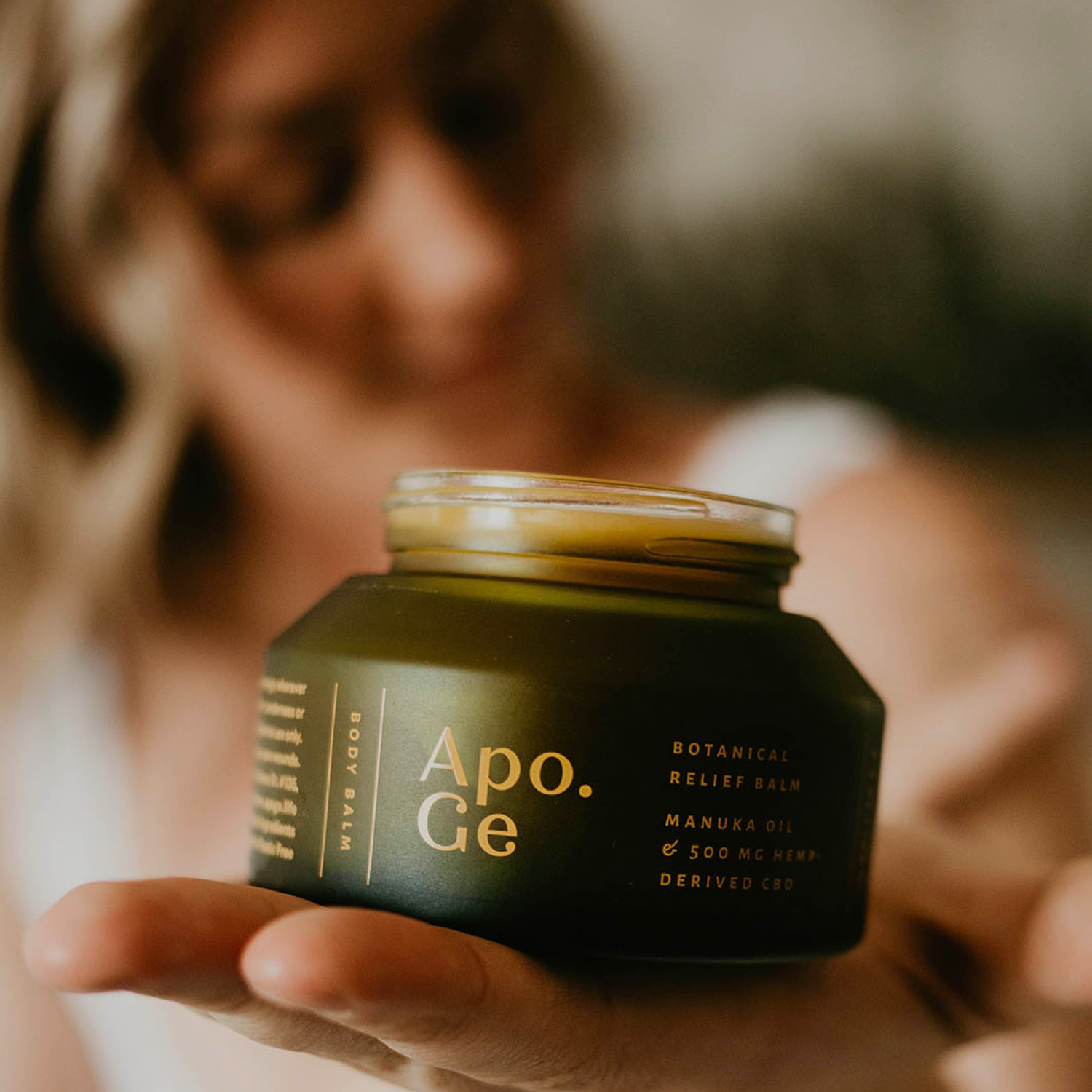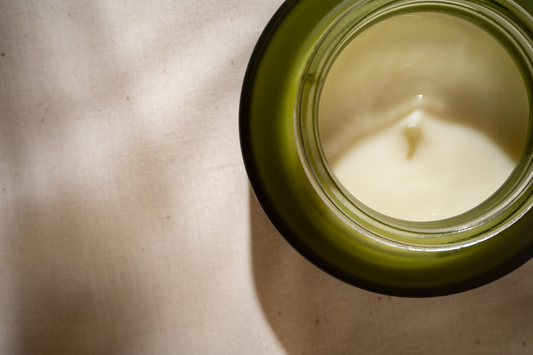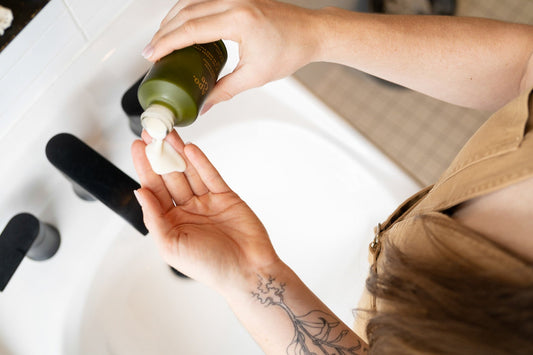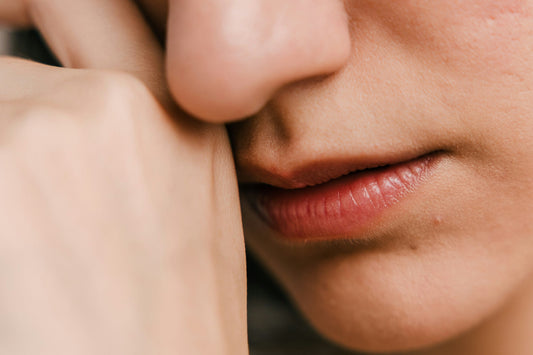Your Complete Exfoliation Cheat Sheet for Smoother, Radiant Skin
Adding exfoliation to your skincare routine is one of the best ways to achieve smoother, brighter, and healthier-looking skin. Exfoliators have one goal, they help remove dead skin cells from the surface of your skin, improving your skin’s texture and leaving it silky-smooth.
Our skin has a remarkable natural renewal process called desquamation, where it sheds dead cells to reveal fresher, healthier ones beneath. This process works as skin cells journey from the deepest layers to the surface, replacing older cells along the way. However, factors like aging, stress, and environmental conditions can slow this process, leaving skin looking dull or uneven.
Types of Exfoliators-
Physical exfoliation is the most hands-on method, using tools or textured products to manually buff away dead skin. On the other hand, chemical exfoliation goes beyond just the surface of your skin. It relies on acids to dissolve the bonds holding dead skin cells together
Lets Break These Down-
Physical |
Chemical |
Enzymes |
|
Salt/sugar scrubs, cleansing brushes, or even a simple washcloth |
AHA's: glycolic, lactic, malic, mandelic, tartaric & citric acids BHA's: salicylic acid PHA's: gluconolactone, galactose, lactobionic acid |
|
|
Quick way to polish the skin and get that instant smoothness |
Resurface dry or sun-damaged skin, unclog pores, target discoloration and texture depending on the acid |
Acne control, reduce wrinkles, soften texture, reduce dullness, promote cell turnover |
Chemical Exfoliants:
Chemical exfoliants use acids to dissolve the bonds between dead skin cells, promoting their removal and revealing fresher skin beneath. Here's a breakdown of the different types:

Alpha Hydroxy Acids (AHAs) are a group of natural and synthetic ingredients that exfoliate the upper layers of your skin, promoting a smoother, more radiant complexion. Despite the term "acid," AHAs are gentle and safe for all skin types, offering a kinder alternative to scrubs or cleansing brushes.
AHA's are powerhouse skincare ingredients that deliver a variety of benefits. They gently exfoliate to reveal a natural, healthy glow while also acting as humectants to attract and retain water in your skin. AHAs plump the skin, reducing the appearance of fine lines and wrinkles, while enhancing firmness and elasticity for a more youthful appearance. They also help fade discoloration and dark spots for a more even skin tone, repair sun-damaged skin, and unclog pores to reduce breakouts.
Here are the most common AHA's:
- Glycolic Acid: Derived from sugar cane, glycolic acid has the smallest molecular size among AHAs, allowing it to penetrate deeply into the skin. It is highly effective for reducing fine lines, fading hyperpigmentation, and improving overall skin texture. However, its strength makes it the most likely to cause irritation, so beginners should start with a gentler option before progressing to glycolic acid.
- Lactic Acid: Sourced from milk, lactic acid is a gentler AHA, making it ideal for sensitive or dry skin. It hydrates while exfoliating, helping to improve skin tone and texture. Its moisturizing properties make it a great option for those looking to balance moisture with exfoliation.
- Malic Acid: Derived from apples and other fruits, malic acid has a larger molecular size than glycolic or lactic acids, making it gentler and less likely to irritate sensitive skin. It provides mild exfoliation and is often combined with other AHAs to enhance their effectiveness. Malic acid also helps maintain the skin's pH balance.
- Mandelic Acid: Extracted from bitter almonds, mandelic acid has a larger molecular structure, making it one of the gentlest AHAs. It is particularly effective for acne-prone skin due to its antibacterial properties and ability to regulate sebum production. Mandelic acid is also a good option for sensitive skin or those new to exfoliation.
- Tartaric Acid: Derived from grapes, tartaric acid provides mild exfoliation and enhances the stability and effectiveness of other AHAs in formulations. It helps smooth the skin's surface and improve texture while providing antioxidant benefits to protect against environmental damage.
- Citric Acid: Found in citrus fruits, citric acid primarily helps brighten the skin and improve its overall tone. It is often used to target dullness and uneven pigmentation while also offering mild antioxidant benefits.
Beta Hydroxy Acids (BHAs) are oil-soluble exfoliants that penetrate deep into the pores while they also work at the skin's surface, making them ideal for addressing clogged pores, blackheads, and acne. BHAs target excess oil and buildup within pores, offering a deeper level of exfoliation that's especially beneficial for oily and acne-prone skin types.

BHAs deliver a range of skincare benefits. They help to clear our pores, reduce inflammation, and calm redness, making them a great choice for sensitive, blemish-prone skin. BHAS also smooth the skin's texture, diminish the appearance of fine lines, and improve overall tone. Because of their anti-inflammatory properties, they're gentle enough for those prone to redness or irritation, providing effective exfoliation without over-drying.
BHA is the same thing as salicylic acid, the gold-standard ingredient for fighting breakouts and other clogs, which also has soothing properties.
- Salicylic Acid: Derived from willow bark, salicylic acid is renowned for its ability to penetrate deep into pores. It effectively dissolves excess oil, unclogs pores, and reduces blackheads and breakouts, making it a go-to for oily and acne-prone skin. Its anti-inflammatory properties help calm redness and irritation, but it can be drying, so it’s best to use sparingly and follow up with a hydrating product.
Poly Hydroxy Acids (PHAs) are a gentler alternative to AHAs, making them ideal for sensitive skin or those new to exfoliation. With larger molecular structures, PHAs exfoliate the skin's surface more slowly, reducing the risk of irritation. They help to remove dead skin cells, improve texture, and promote a radiant complexion while also acting as humectants to attract and retain water. PHAs, like gluc
onolactone and lactobionic acid, are especially beneficial for dry or mature skin, offering antioxidant benefits and supporting the skin's natural barrier for a smoother, more hydrated appearance.
- Gluconolactone: Derived from glucose, a simple sugar, gluconolactone excels in supporting skin health through its hydrating and strengthening properties. It aids in fortifying the skin’s moisture barrier, helping to reduce sensitivity over time while keeping the skin supple and smooth. Its antioxidant capabilities further shield the skin from environmental damage, making it a protective addition to any routine.
- Lactobionic Acid: Derived from lactose, the sugar found in milk, takes skin care a step further by delivering deep hydration and soothing benefits, perfect for delicate or aging skin. Its ability to reduce visible signs of aging, like fine lines and rough texture, makes it a versatile ingredient for achieving a more youthful appearance. Beyond its exfoliating role, lactobionic acid helps the skin retain moisture longer and calms irritation, making it an excellent choice for those with compromised or overly dry skin.
Enzymatic Exfoliants:

Enzymatic exfoliants are a gentle yet effective alternative to chemical and physical exfoliants. These exfoliants use natural enzymes, typically derived from fruits like papaya, pineapple, or pumpkin, to break down the proteins that bind dead skin cells to the skin's surface. Unlike acids, which dissolve bonds between cells, enzymes work by digesting the keratin in dead skin, resulting in a more delicate form of exfoliation that minimizes risk of irritation.
Enzymatic exfoliants also provide added nourishment to the skin, as many of the enzymes contain antioxidants and vitamins that help soothe and hydrate. Because enzymatic exfoliants work more gradually than other types of exfoliants, they are ideal for those who prefer a slower, more gentle approach to exfoliation. They can be used regularly in your routine without over-drying or damaging the skin, making them a great option for maintaining a healthy, radiant complexion over time.
- Bromelain: Derived from pineapple, bromelain is a gentle enzyme that exfoliates while soothing inflammation and redness, perfect for sensitive skin. Rich in antioxidants, it brightens the complexion and promotes smoother, more even skin over time.
- Papain: Extracted from papaya, papain helps brighten the skin, reduce hyperpigmentation, and even out skin tone. It is rich in antioxidants that nourish and soothe the skin, making it perfect for sensitive or acne-prone skin needing a gentle exfoliant.
- Pumpkin Enzymes: Derived from pumpkin pulp, these enzymes provide nourishment and improve skin texture. Rich in antioxidants like beta-carotene, they help reduce fine lines and protect from environmental damage. These enzymes are ideal for sensitive, dry, or aging skin, offering mild exfoliation and hydration.
Now let's find the right exfoliator for your skin-
Every skin type has unique needs, and exfoliation should enhance—not irritate—your skin. Understanding your skin type is the first step in choosing the right exfoliation method and frequency.
Rather than viewing skin types as fixed categories, think of them as points on a spectrum of oil production. On one end is dry skin, with minimal sebum production, and on the other is oily skin, characterized by an overproduction of sebum. Your skin can fall anywhere along this spectrum and may shift due to factors like age, seasonal changes, or pregnancy. With this perspective in mind, let’s explore where your skin currently stands.
Balanced Skin, aka "Normal Skin"
- Characteristics: Balanced moisture and oil levels, smooth texture, minimal sensitivity.
- Exfoliation Advice: Use gentle chemical exfoliants like AHAs 1–2 times per week to maintain radiance and support cell turnover.
- Signs of Over-Exfoliation: Redness, tightness, or a slightly dry, flaky texture.
Oily Skin
- Characteristics: Excessive sebum production, shiny appearance, enlarged pores, prone to blackheads and breakouts.
- Exfoliation Advice: Opt for BHA-based exfoliants 2–3 times per week to unclog pores and control oil. Avoid overusing scrubs, as they can overstimulate oil production.
- Signs of Over-Exfoliation: Increased oil production as the skin compensates for lost moisture, leading to breakouts.
Dry Skin:
- Characteristics: ow sebum production, rough or flaky texture, tight or dull appearance.
- Exfoliation Advice: Use mild exfoliants like lactic acid 1–2 times per week, followed by a hydrating serum, toner, or moisturizer to rebalance moisture levels.
- Signs of Over-Exfoliation: Extreme dryness, flaking, sensitivity, or stinging when applying products.
Combination Skin
- Characteristics: Oilier T-zone (forehead, nose, chin) with drier cheeks, uneven texture.
- Exfoliation Advice: Spot-treat with BHAs for oily areas and use gentler AHAs on drier parts. Exfoliate 1–2 times per week.
- Signs of Over-Exfoliation: Patchy redness, dryness on cheeks, and irritation in oily areas.
Sensitive Skin:
- Characteristics: Prone to redness, irritation, or stinging; reacts easily to new products or environmental factors.
- Exfoliation Advice: Stick to enzyme-based or very mild PHA exfoliants 1–2 times per week. Avoid harsh scrubs and high-concentration acids.
- Signs of Over-Exfoliation: Persistent redness, burning sensation, or increased sensitivity to other skincare products.
Acne-prone skin often comes to mind when thinking about exfoliation, but it's important to remember that acne is a skin condition, not a skin type. If you struggle with acne, your skin will still fall into one of the primary types- normal, dry, oily, combination, or sensitive. The key to effective exfoliation is tailoring your approach to both your skin type and your skin concerns.
Sensitive skin benefits most from the gentlest options, such as enzyme exfoliants, PHAs, or low percentage AHAs. Exfoliating once or twice a week is usually enough to see improvement without causing irritation.
For dry or combination skin, a mix of exfoliants may work best. AHAs are excellent for addressing discoloration and smoothing texture, while PHAs provide a milder option for more delicate or dry areas. The Byoma Brightening Toner is my current go-to exfoliant 2-3 times a week.
Oily or acne-prone skin responds well to BHAs, like salicylic acid, which penetrate pores to address blackheads and congestion. Pairing BHAs with an AHA can enhance overall clarity and refinement. I personally love the Naturium BHA Liquid Exfoliant 2% and Sofi Pavitt Face Mandelic Clearing Serum.
No matter your skin type, always listen to your skin. Over-exfoliation can worsen breakouts and irritation, so start slow and adjust based on how your skin responds.
Incorporating Exfoliation Into Your Routine-
![]()
![]()


If you’re new to exfoliation, ease into it to avoid overwhelming your skin. Start with exfoliating once or twice a week and gradually increase the frequency as your skin builds tolerance. Your exfoliation step will always come after you cleanse in your skincare routine. You always want to have a clean surface for your exfoliants to be as effective as possible.
If you are using a leave-on chemical exfoliant (and not a face mask), allow the product to sit on your face for 2-3 minutes before applying other products. Then follow up with a hydrating serum and/or moisturizer to replenish your skin’s barrier.
One golden rule of exfoliation? Always, always wear sunscreen. Exfoliating makes your skin more sensitive to the sun, so SPF is non-negotiable if you want to protect your glow.




